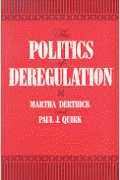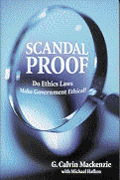Regulation is pervasive throughout the world. The prices of water, gas, electricity, rail, mail, air travel, and phone are frequently regulated by government authorities in various ways. Objectives for this regulation vary, but they include promoting operational and economic efficiency, protecting against monopoly power, and addressing equity and environmental concerns.
During the last decade, customer engagement has become a central part of modern utility regulation. The essence of customer engagement is that regulated firms involve customers more directly in their business decisions, particularly in preparing for rate cases or price reviews.1 Utilities can engage with customers either directly or through negotiation with groups representing customers over prices and other dimensions of service. The novelty of this approach lies in the direct interaction with customers, and that it may help discover what customers want. This information can then be incorporated in the outcomes of regulation.
During the last decade, customer engagement has become a central part of modern utility regulation.
Despite the increasing popularity of customer engagement, there is not one widely accepted definition.2 In “Power to the people: A new trend in regulation,” Robert Hahn, Robert Metcalfe, and Florian Rundhammer define customer engagement as a regulatory approach aimed at understanding customer preferences and finding out how to best meet those preferences. In practice, the authors argue, this approach can take different forms. In some cases, customer groups directly engage and negotiate with regulated firms. In other cases, the formal analysis of customer demands by regulated firms is an important input in regulatory decision making.
This paper makes four contributions: First, the authors perform the most comprehensive analysis to date of how regulators are using customer engagement, and offer a simple model for understanding different customer engagement initiatives.
Second, the authors review assessments of customer engagement in the literature, and find that there are no quantitative, empirically robust assessments of the effectiveness of customer engagement as a regulatory tool. They argue that part of the problem is methodological: it is difficult to specify a counterfactual from which to measure the effectiveness of customer engagement efforts.
Third, the authors develop two detailed case studies of an energy regulator and a water regulator in the U.K., Ofgem and Ofwat, which are in the forefront of customer engagement efforts.3 In both cases, regulators and stakeholders are generally satisfied with the outcomes of customer engagement. Regulated firms appear to have increased their engagement efforts after the regulators explicitly incorporated customer engagement in their price reviews. The paper finds, however, that incentives for firms to engage with their customers, and to use particular tools in the process, are not clearly specified. There does not appear to be a direct link between the engagement strategy used and the economic incentives received by a firm.
Fourth, Hahn et al. discuss ways in which regulators could refine the current regulatory approach, and suggest a new framework for improving customer engagement. The new framework applies to all existing forms of customer engagement. It relies more heavily on microeconomics, modern tools of program evaluation, and adjusting the incentive structure for doing customer engagement. The authors identify three ways in which this framework might improve the efficiency of customer engagement as currently practiced: first, by introducing economic efficiency explicitly as a yardstick for evaluating customer engagement; second, by providing firms and customer groups with direct incentives for good customer engagement; and third, by making greater use of field experiments and revealed preference techniques to provide more robust estimates of customer preferences.
The authors may receive financial support from the Office for Water Services Regulation Authority of the UK government. They are currently not an officer, director, or board member of any organization with an interest in this article.
-
Footnotes
- The ratemaking process typically involves “rate cases” in the U.S. and “price reviews” in the U.K. Because most of our examples are from the U.K., we use the term “price review” to refer to the proceedings of regulators.
- Heims and Lodge (2016a, p.19) state that “in contrast to the previous era where there was broad agreement on […] the application of price-capping methodologies, there is little agreement as to what consumer engagement might actually imply. For some, consumer engagement offers the promise of negotiated settlements. For others, it is mostly a way of encouraging regulated industries to become more responsive to their customers’ interests.”
- Ofgem is the Office for Gas and Electricity Markets and Ofwat is the Office for Water Services Regulation Authority. Ofgem is the regulator for gas and electricity in Great Britain, and Ofwat regulates water and sewerage services in England and Wales. Ofgem and Ofwat are non-ministerial departments in the British government. They are part of a collection of UK economic regulators, including, for example, communication (Ofcom), rails and roads (ORR), and civil aviation (CAA).
The Brookings Institution is committed to quality, independence, and impact.
We are supported by a diverse array of funders. In line with our values and policies, each Brookings publication represents the sole views of its author(s).










